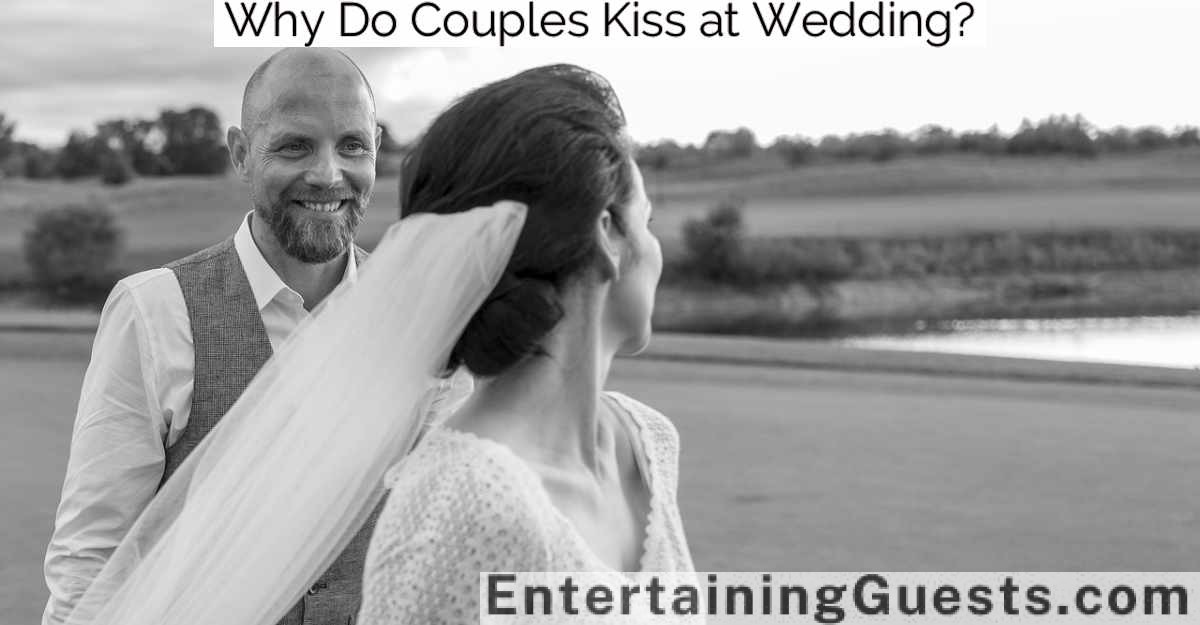Wedding photographers charge substantially due to their extensive investment in high-quality equipment, meticulous pre-event planning, and intense post-processing work. They tailor their services to meet diverse needs, applying emotional intelligence and technical skill to capture each moment’s magic. Their costs also cover equipment maintenance, business expenses, and taxes, all essential for sustaining their professional standards. These passionate professionals guarantee that each image vividly portrays the joy and uniqueness of a couple’s special day, transforming fleeting moments into timeless memories. This understanding can further illuminate why their prices reflect not just a service, but a lifelong investment.
Key Takeaways
- Wedding photographers invest in high-quality equipment and regular upgrades to deliver superior image quality.
- Extensive pre-event preparations include client consultations and venue reconnaissance to ensure personalized service.
- Post-processing requires meticulous editing to enhance photos, demanding significant time beyond the event.
- Photographers face substantial business expenses including equipment maintenance, office costs, and taxes.
- The physical and emotional effort during the event involves long hours, coordination, and capturing key moments effectively.
Understanding Pricing Structures
Wedding photographers often tailor their pricing structures to accommodate a range of services, ensuring that each couple can find a package that best suits their unique needs and budget. These professionals consider various factors when determining their rates, such as the length of coverage, number of photographers, and post-production editing.
A basic package might include a few hours of shooting with a single photographer, ideal for smaller, more intimate ceremonies. In contrast, more extensive packages could provide multi-day coverage with multiple photographers, capturing everything from the rehearsal dinner to the reception.
Additionally, many photographers offer add-ons like engagement shoots, special prints, and custom albums. These extras allow couples to customize their photography experience further, but they also affect the overall cost. It’s essential for couples to discuss what’s included in each package to avoid unexpected expenses.
Photographers also factor in their expertise, reputation, and regional cost differences when setting prices. Those with years of experience and a strong portfolio often charge more, reflecting their proven ability to capture beautiful, timeless wedding photos. Understanding these aspects helps couples appreciate the value behind the investment in their wedding memories.
Pre-Event Preparations
As wedding photographers gear up for the big day, their pre-event preparations are essential to capturing those unforgettable moments.
They begin with initial client consultations to guarantee they understand the couple’s vision and expectations.
Following this, they conduct venue reconnaissance to familiarize themselves with the lighting and layout, and meticulously select the best equipment to meet the challenges of the day.
Initial Client Consultations
Many photographers consider the initial client consultation an important step in capturing the essence of the couple’s unique story. This meeting isn’t just about logistics; it’s an in-depth exploration into the couple’s vision, personalities, and expectations. Photographers use this time to understand the theme, color schemes, and the key moments the couple deem significant. It’s a foundation for crafting images that are as unique as the love story they represent.
During this consultation, photographers also explain their workflow, packages, and tailor their services to meet specific desires. They’re not just selling a service; they’re crafting an experience that resonates on a personal level. It’s about making the couple feel seen and understood, which is vital for creating genuine and emotive images.
Here’s a brief look at what is typically discussed during these consultations:
| Aspect | Details Covered | Importance |
|---|---|---|
| Personal Style | Preferences in photography style | Guarantees tailored approach |
| Event Specifics | Date, schedule, special requests | Aligns expectations |
| Package Details | Inclusions, number of shooters | Clarifies the offer |
| Communication | Preferred methods and frequency | Sets collaboration tone |
This tailored approach is why wedding photographers invest significant time in consultations, setting the stage for a successful collaboration.
Venue Reconnaissance
Prior to the event, photographers often visit the venue to meticulously plan the best angles and lighting, guaranteeing every shot captures the ambiance and detail envisioned by the couple. This venue reconnaissance is vital, as it allows photographers to familiarize themselves with the location’s unique characteristics and potential challenges.
They’re not just scouting spots; they’re envisioning the day through their lens, identifying backdrops that will enhance the romantic and celebratory spirit of the occasion.
During these visits, photographers also assess the natural light available at different times of the day, which is fundamental for planning the timing of each photograph. They consider how the sun’s position might affect the mood and quality of the photos. For indoor venues, understanding the artificial lighting setup helps them prepare for the technical adjustments needed on the wedding day.
Moreover, photographers take note of architectural elements and decorative details that can be used to frame enchanting shots or add narrative depth to the album. They’re also on the lookout for any restrictions the venue might impose on photography.
This thorough preparation is a reflection of the dedication and professionalism of wedding photographers, who invest time and effort to guarantee that no moment is missed and every picture tells a story.
Equipment Selection
Selecting the right equipment is vital for wedding photographers, as it guarantees they can capture each moment with clarity and artistry. They don’t just show up with a camera; they bring a carefully chosen arsenal tailored to the unique demands of each wedding.
High-resolution cameras are a must, making certain that every smile and tear is captured in stunning detail. They often carry multiple bodies to switch quickly between lenses or as a backup.
Lenses are chosen for their ability to render sharp images across varying lighting conditions. A fast prime lens is perfect for low light scenarios, capturing crisp images without intrusive flash. Zoom lenses offer versatility, allowing the photographer to adapt to dynamic environments without missing a beat.
Lighting equipment is also essential. External flashes, diffusers, and reflectors are standard gear. They help manage the harsh or inadequate lighting often found in venues, making sure the subject is beautifully illuminated.
Memory cards, batteries, and backups are packed with precision, ensuring there’s no chance of missing a vital moment due to technical failures. Each piece of equipment serves a specific purpose, chosen with the utmost care to guarantee the final photographs not only document the day but tell a compelling, vivid story that couples will cherish forever.
Day-of Photography Efforts
A wedding photographer’s day-of efforts often involve capturing every fleeting moment, from the nervous smiles of the morning to the joyful tears of the reception. They’re there to document the whirlwind of emotions and events, ensuring no detail is overlooked. This intense focus requires not just technical skill but also an empathetic understanding of the day’s significance for the couple and their families.
Throughout the wedding day, photographers perform a variety of demanding tasks:
-
Coordination and Timing: They must expertly manage their time, often adhering to a strict schedule while remaining flexible enough to capture spontaneous moments. This balancing act requires acute awareness and the ability to make quick, effective decisions.
-
Physical Stamina: Covering a wedding is physically demanding. Photographers are on their feet for long hours, moving equipment, adjusting angles, and sometimes contorting into unusual positions to get the perfect shot.
-
Emotional Intelligence: They must navigate a range of emotions, from the stress of the preparations to the joys of the celebration, all while maintaining professionalism and sensitivity to capture the most genuine moments.
These efforts aren’t just about taking pictures; they’re about creating a seamless, beautiful narrative of a once-in-a-lifetime event.
Post-Processing Workload
Every captured image requires meticulous attention during post-processing, where photographers refine colors, adjust lighting, and edit details to bring each photo to life. This intricate process is often unseen by many but is essential in sculpting memorable images that evoke the magic of a couple’s special day. After hours of shooting, photographers spend even more time ensuring each photograph reflects the emotion and ambiance of the wedding.
Post-processing isn’t just about applying filters; it’s an art form requiring skill, patience, and advanced software knowledge. Photographers balance tones, correct imperfections, and carefully select which moments best tell the wedding’s story. The table below captures the essence of why this detailed work is so profound:
| Emotion Captured | Detail Enhanced | Impact on Viewer |
|---|---|---|
| Joyful tears | Crisp clarity | Deep connection |
| Candid laughter | Vivid colors | Instant joy |
| Loving glances | Soft lighting | Romantic allure |
| Dance floor fun | Dynamic angles | Energetic feel |
| Heartfelt vows | Enhanced audio | Emotional depth |
Each column reflects the transformation from a simple shot to a powerful narrative piece. This extensive effort contributes greatly to why wedding photographers’ fees are substantial, reflecting not just the capture but the creation of lasting memories.
Equipment and Maintenance Costs
Wedding photographers invest heavily in high-quality camera gear to capture the irreplaceable moments of a couple’s special day.
They also face the necessity of routine equipment upgrades to stay current with the latest technology, ensuring superb image quality.
Additionally, the costs for repair and service fees can accumulate, maintaining the equipment’s peak performance.
High-Quality Camera Gear
Investing in high-quality camera gear, which includes both acquisition and ongoing maintenance, considerably escalates the operating costs for professional wedding photographers. They can’t compromise on the quality of equipment, as their clients expect impeccable and stunning visuals that capture their most cherished moments.
The gear mustn’t only produce high-resolution images but also handle the dynamic range of wedding environments—from dimly lit churches to bright, outdoor receptions. High-quality cameras and lenses are pivotal for producing the desired clarity and depth in wedding photos.
However, the financial outlay for such equipment is substantial. Professional cameras, with full-frame sensors and the ability to perform under low light conditions, come with a hefty price tag. Additionally, specialized lenses for various photographic needs, such as wide-angle or macro lenses, add to the cost.
The ongoing costs include:
-
Regular servicing: To guarantee gear remains in ideal condition, preventing costly repairs or poor performance during critical moments.
-
Insurance: Covering expensive equipment against theft, loss, or damage.
-
Cleaning and calibration: Essential to maintain image quality and equipment functionality, carried out periodically by professionals.
These expenses reflect the dedication and commitment of wedding photographers to their craft, guaranteeing that every snapshot they take meets the highest standards of quality and creativity.
Routine Equipment Upgrades
To stay at the forefront of technological advancements and client expectations, professional wedding photographers must routinely upgrade their equipment. This necessity isn’t just about keeping up with the latest camera models but also includes acquiring state-of-the-art lenses, advanced lighting systems, and innovative software that enhances photo quality and editing capabilities.
These upgrades are vital as they guarantee photographers can deliver the stunning, high-resolution images that modern couples demand.
Each piece of equipment, from cameras to drones, represents a significant financial investment. For instance, top-tier cameras that offer superior image quality and low-light performance can cost thousands of dollars. Additionally, specialized lenses for capturing everything from the intimate moments of a couple’s first look to the grandeur of panoramic venue shots add to the financial outlay.
Moreover, advancements in technology mean new features are continually developed, which can dramatically improve the outcome of wedding photography. Features like better image stabilization, higher dynamic range, and improved autofocus systems can make a substantial difference in capturing fleeting moments with clarity and detail.
Investing in these upgrades isn’t merely a preference but a professional necessity. It’s what sets apart seasoned photographers from amateurs and guarantees every couple’s special day is immortalized with the artistry and technical excellence it deserves.
Repair and Service Fees
Beyond purchasing new equipment, wedding photographers also face significant costs in maintaining and servicing their existing gear. High-quality cameras, lenses, and accessories require regular professional upkeep to guarantee they perform flawlessly during critical moments. The precision with which a camera captures the delicate details of a wedding gown or the soft expressions of a couple in love can’t be compromised.
Maintenance involves a variety of expenses:
-
Professional Cleaning: To prevent dust, mold, and residue buildup, professional cleaning services are necessary, especially after events held in challenging environments like beaches or dusty venues.
-
Calibration Services: Regular calibration guarantees the accuracy of focus and color reproduction. This is essential for delivering sharp, vibrant images that meet clients’ expectations.
-
Repair Costs: Occasionally, equipment suffers accidental damage despite careful handling. Repairing high-end cameras and lenses often incurs substantial costs, but it’s important for maintaining the reliability and quality output of the photography gear.
These upkeep efforts aren’t just about preventing malfunction. They’re about preserving the integrity of the photographer’s artistry. Wedding photographers invest heavily in equipment maintenance to assure that each snapshot reflects their signature style and meets the highest standards of excellence.
Business Expenses and Taxes
Wedding photographers must meticulously manage their business expenses and taxes to secure financial stability and compliance with the law. Every dollar they earn is scrutinized, with a significant portion allocated to various operational costs. They’re not just paying for their time and skill; they’re covering everything from office rent and utilities to marketing and advertising expenses.
These professionals must also invest in high-quality equipment, which includes cameras, lenses, lighting, and backup gear to guarantee they’re prepared for any situation. Additionally, photographers must set aside funds for software subscriptions for photo editing, website hosting, and client management systems. These tools are essential for delivering polished, high-quality images and maintaining an efficient workflow. It’s not just about capturing stunning photos; it’s about delivering a seamless experience to their clients from start to finish.
They also have to navigate the complex world of business taxes. Photographers must pay self-employment taxes, state taxes, and possibly local taxes depending on their location. They often hire accountants to ensure they’re not only meeting legal obligations but also maximizing their deductions.
This meticulous financial management is vital for their business to thrive amidst the competitive and ever-evolving wedding industry.
Frequently Asked Questions
How Does the Photographer’s Experience Level Affect Pricing?
A photographer’s experience greatly influences their pricing. Highly experienced photographers command higher fees because they bring expert skills, refined techniques, and a proven track record of delivering exceptional, memorable images to each event.
Can I Negotiate Prices With Wedding Photographers?
Yes, one can often negotiate prices with wedding photographers, especially if they’re booking during off-peak seasons or customizing a package that aligns more closely with specific budget constraints and service requirements.
Are There Cheaper Alternatives to Professional Wedding Photographers?
Yes, there are cheaper alternatives. Couples can hire photography students, use guest photo apps, or even consider semi-professional photographers to capture their special day without breaking the bank.
How Far in Advance Should I Book a Wedding Photographer?
One should book a wedding photographer at least 6-12 months in advance to guarantee availability, especially if the wedding’s during peak season. They’ll capture those priceless moments you’ll cherish forever. Don’t delay!
Does the Time of Year Affect Wedding Photography Prices?
Yes, the time of year notably impacts wedding photography prices. Peak wedding seasons, like spring and summer, often see higher rates due to increased demand. Off-season months might offer more budget-friendly options.
Conclusion
Wedding photographers invest deeply in their craft, from mastering complex equipment to perfecting each image in post-processing.
They bear significant business expenses and maintain high standards to capture fleeting, priceless moments.
Their fees aren’t just for the hours at your event but also for the extensive preparation and meticulous attention to detail that guarantee your memories are beautifully preserved.
Remember, when you hire a wedding photographer, you’re investing in a timeless treasure, crafted with passion and professionalism.







